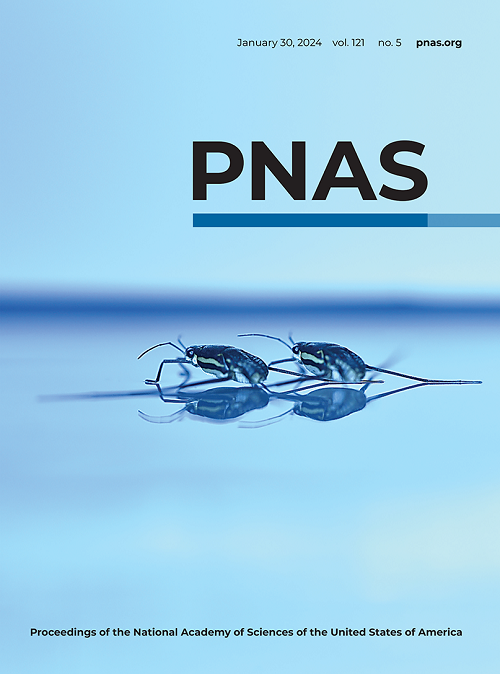IF 9.4
1区 综合性期刊
Q1 MULTIDISCIPLINARY SCIENCES
Proceedings of the National Academy of Sciences of the United States of America
Pub Date : 2025-02-19
DOI:10.1073/pnas.2405379122
引用次数: 0
摘要
自然选择往往同时作用于多种特征。例如,HIV-1 病毒面临着逃避宿主免疫的压力,同时还要保持复制能力。虽然过去的研究已经对 HIV-1 进化过程中的选择进行了研究,但与其他选择作用于多个性状的例子一样,定量区分不同性状对适应性的贡献是一项挑战。由于单个突变可能同时影响免疫逃逸和复制,因此这项工作变得更加困难。在这里,我们建立了一个进化模型,将逃避 CD8 + T 细胞介导的免疫(我们将其模拟为二元性状)的影响与对适应性的其他贡献区分开来。经过模拟验证后,我们将该模型用于研究临床数据集中宿主内 HIV-1 的进化。我们观察到了免疫逃逸的强烈选择,有时大大超出了过去的估计,尤其是在感染早期。保守估计表明,在感染的最初几个月到几年中,HIV-1 的适应性提高约有一半可归因于 T 细胞逃避。我们的研究方法并不局限于 HIV-1 或病毒,也可用于研究其他情况下数量性状的进化。本文章由计算机程序翻译,如有差异,请以英文原文为准。
A binary trait model reveals the fitness effects of HIV-1 escape from T cell responses
Natural selection often acts on multiple traits simultaneously. For example, the virus HIV-1 faces pressure to evade host immunity while also preserving replicative fitness. While past work has studied selection during HIV-1 evolution, as in other examples where selection acts on multiple traits, it is challenging to quantitatively separate different contributions to fitness. This task is made more difficult because a single mutation can affect both immune escape and replication. Here, we develop an evolutionary model that disentangles the effects of escaping CD8 + T cell–mediated immunity, which we model as a binary trait, from other contributions to fitness. After validation in simulations, we applied this model to study within-host HIV-1 evolution in a clinical dataset. We observed strong selection for immune escape, sometimes greatly exceeding past estimates, especially early in infection. Conservative estimates suggest that roughly half of HIV-1 fitness gains during the first months to years of infection can be attributed to T cell escape. Our approach is not limited to HIV-1 or viruses and could be adapted to study the evolution of quantitative traits in other contexts.
求助全文
通过发布文献求助,成功后即可免费获取论文全文。
去求助
来源期刊
CiteScore
19.00
自引率
0.90%
发文量
3575
审稿时长
2.5 months
期刊介绍:
The Proceedings of the National Academy of Sciences (PNAS), a peer-reviewed journal of the National Academy of Sciences (NAS), serves as an authoritative source for high-impact, original research across the biological, physical, and social sciences. With a global scope, the journal welcomes submissions from researchers worldwide, making it an inclusive platform for advancing scientific knowledge.

 求助内容:
求助内容: 应助结果提醒方式:
应助结果提醒方式:


